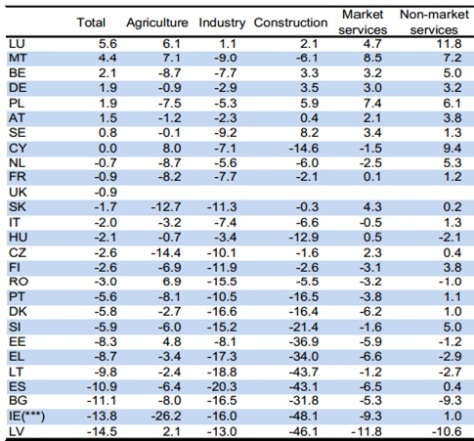Small Baltic state – Latvia decided to apply to join the eurozone in 2014. Latvia pegged its currency to the euro after joining the European Union in 2004. Small and limber economy – Latvia should slide more easily into the currency bloc than larger states like Poland and the Czech Republic and have remained keener on joining throughout the banking and debt crises. 
Many Latvians’ mortgage loans are in euros – meaning a switch would decrease currency risk and most see the currency as a lesser long-term risk than the lat. They are also keen to entrench their links with western Europe to keep former imperial master Russia at arms length.
But while the country’s leadership is keen on the project, polls show much of the population are worried that a currency switch will drive prices higher and take control of the economy out of Latvian hands.
To join the euro zone, Latvia needed to ask for an assessment by the European Commission and European Central Bank of its readiness to switch currency.
At the moment of writing Latvia fulfills all five Maastricht criteria and should thus be set for adopting the euro on 1 January 2014. True, besides the five quantitative criteria (on inflation, exchange rate, long-term interest rates, budget deficit and government debt) a country is also supposed to be evaluated on the basis of ‘sustainability’ of e.g. low inflation but that never seems to have played a major role. (Estonia was invited to join at a time of negative inflation, which is hardly sustainable). For all the recent newcomers, Slovenia, Malta, Cyprus, Slovakia and Estonia, it seems to have been the case that fulfilling the five means you’re in and I do not envisage this to be different in the case of Latvia.
“This is a day that will enter Latvia’s history,” Finance Minister Andris Vilks told reporters when he, Prime Minister Valdis Dombrovskis and central bank chief Ilmars Rimsevics signed the application.
The application will be handed over in Brussels. A report on Latvia’s euro hopes will be prepared by the European Commission and the European Central Bank. Finance ministers are expected to take a final decision in July.
Latvia says it meets all the economic criteria needed to be accepted into the euro zone. The criteria relate to levels of debt, deficit, inflation, long-term interest rates and having a stable peg to the euro.
Dombrovskis said after the signing that the euro would benefit Latvia in terms of increased investment, lower currency.
The Eurozone may bring many benefits to the Latvian economy but economic development still rests with the Latvians and economic convergence is not automatically guaranteed by the euro. Thus the hard work does not end on 31 December 2013 – it begins on 1 January 2014.
Enthusiasm for the euro waned across much of eastern Europe after Greece’s problems emerged in 2009 and drove the currency bloc into a series of sovereign bailouts which has split its members economically and raised questions of its broader viability.
The Czechs and Hungary remain far more skeptical while Romania and Bulgaria are still far from fulfilling the Maastricht criteria for joining.
Latvia kept its peg to the euro even when some economists said a devaluation would have helped ease its downturn in 2009 and the government had to slash public sector wages and hike taxes instead.
Despite its current relatively high growth rates, at 5.1 percent year-on-year and 1.3 percent quarter-on-quarter in the last three months of 2012, the country remains one of the poorest countries in the EU along with Bulgaria and Romania.
Latvia will become the 18th country to join the euro area, and the second Baltic state to do so.
/By Andrea Blažević, Antea Božić, Kristina Piene and Agita Sarkane/
Sources:
http://www.ir.lv/2013/4/29/latvia-in-the-eurozone-lots-of-work-ahead
http://www.euronews.com/2013/03/05/latvia-applies-to-join-the-eurozone/
http://www.reuters.com/article/2013/03/04/us-latvia-euro-idUSBRE9230EK20130304






